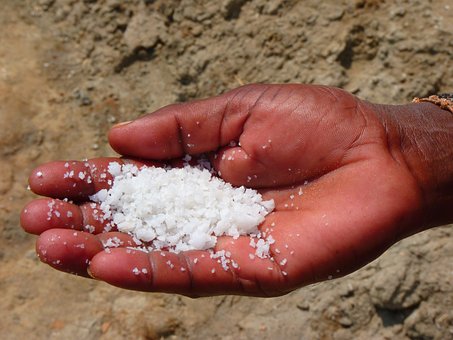 The other night, I grabbed a packet of dried soup to make for dinner. It was a simple vegetable soup with dumplings that took about 5 minutes to cook. Once it was done, I tasted it and it had so much salt, I could have floated an egg on the liquid. I needed to double the amount of water to make it almost edible.
The other night, I grabbed a packet of dried soup to make for dinner. It was a simple vegetable soup with dumplings that took about 5 minutes to cook. Once it was done, I tasted it and it had so much salt, I could have floated an egg on the liquid. I needed to double the amount of water to make it almost edible. I checked the back of the soup packet to check the nutritional contents. The amount of sodium listed turned out to be about 40 percent of the daily required amount per person.
I looked at another packet and it contained enough sodium to meet 44 percent of the daily required amount per person. I don't usually buy preprocessed foods so it was a surprise to find so much sodium in the soup. One reason, there is so much salt in processed foods is due to salt's preservative characteristics. Salt when used as a preservative, absorbs water from bacteria either killing it or slow down its growth.
The second thing salt does is enhance the flavor of the food being prepared. For this, its best to use a sprinkle of salt once the dish is prepared because you don't need much at all. Unfortunately, people get into a habit of salting the food before they taste it so they add to the amount there. One important thing is that salt is not the only item that adds sodium to the food. It can also be added via Mono sodium glutamate, sodium ascorbate, sodium nitrate, and many other additives.
Some of the foods you'll find high levels of sodium, include processed cheese, dried foods, luncheon meats, bacon, sausage, pasta mixes like mac and cheese, pizza, chips, crackers, soups, rice dishes, fast food, etc. At this point over 70% of sodium consumed by Americans is by eating processed food from the store or from restaurants. Since the daily required amount of sodium recommended is between 1500 and 2300 milligrams each day, that means most people are getting between 1000 and 1650 milligrams of sodium by eating processed foods.
Think about this, if I ate two servings of that soup every day, I'd have used most of my recommended daily amount. Unfortunately, too much sodium can increase your blood pressure, which contributes to heart disease and strokes.
The fastest way to decrease the amount of sodium in your diet is to read the nutritional labels on every product you purchase to make life easier or even better is to make everything from scratch so you are not adding sodium by adding a can of mushroom soup and onion rings to your cooked green beans for your famous green bean casserole you bring to every potluck.
If you buy it at the store, check the nutritional label even if its labeled all natural or whole grains because it can still have a fair bit of salt. Even your bottled salad dressings often have 300 to 400 milligrams of salt per serving. If you buy it at the store and it has a nutritional label, there is a good chance it has quite a bit of sodium.
I now know, not to assume but to double check. Let me know what you think, I'd love to hear. Have a great day.
No comments:
Post a Comment